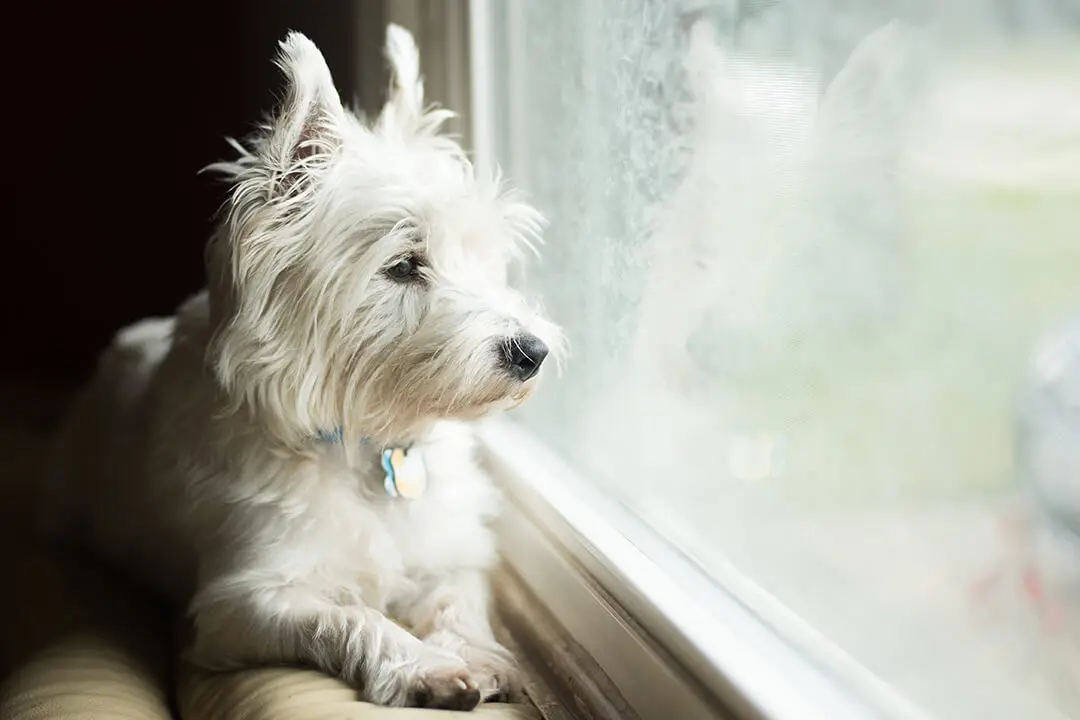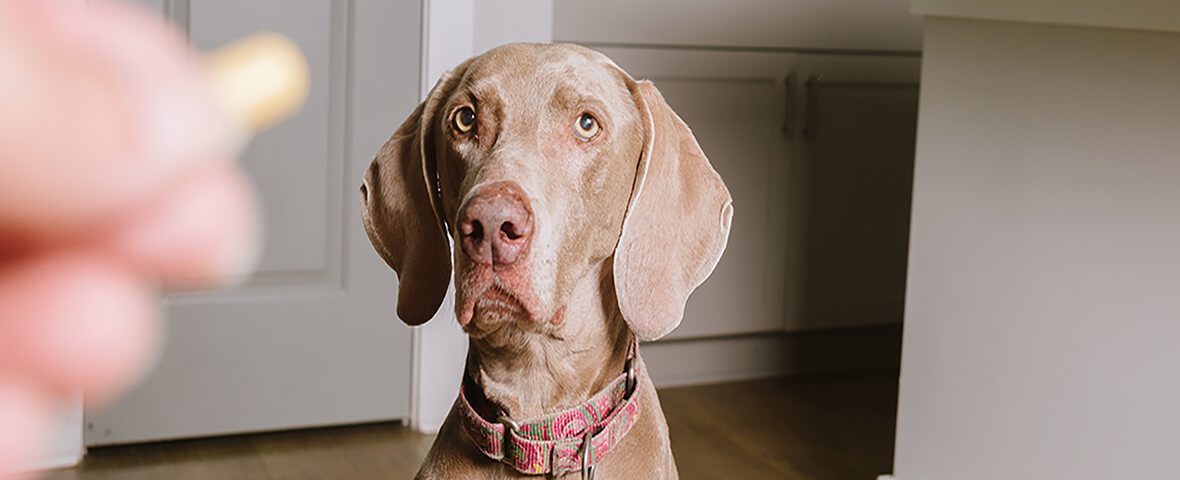Separation Anxiety in Dogs: Signs, Causes and Treatment
We love our dogs for many reasons, including their loyalty and devotion to us. They are often happiest when standing faithfully by our side, and least happy when separated from us.
But some dogs can suffer from stress and panic when you leave the house – or even when you leave the room. This condition is called separation anxiety.

What to look for:
It’s important to identify the signs of anxiety that some dogs may display when they are separated from their owners. These signs occur with social isolation from their owners and not with isolation alone. The signs are usually most intense for the first 15 minutes after departure, but can continue during the entire period of separation.
- Crying, whining or barking when you leave home
- Window running and pacing after you leave
- Destruction of personal items with your scent, like a pillow or a shirt, when you’re gone
- Accidents while you’re out of the house
Some of these behaviors are common in other situations, such as boredom, physical illness or excessive energy in young puppies. Signs related to separation anxiety are exhibited only in the physical absence of the owner.
Causes
Certain types of dogs may be more prone to developing this condition, including:
- Rescue pets or pets who have been re-homed to a new owner
- Pets who have experienced a disruption to normal home life – such as moving to a new environment, downsizing, or the addition or departure of a family member
- Older pets – in some cases, separation anxiety can develop or reappear with age
- Pets with noise phobia – for example, if a dog is afraid of thunderstorms, he may be nervous about experiencing loud thunder and connect hearing those noises at some point when the owner is gone.
Keep in mind social behaviors in dogs reflect their descent from wolves, which have a very structured society. The cohesion of the group or “pack” is critical to survival. Social attachments in dogs are what predispose them to experience separation-related emotions and behaviors.
Treatment
Behavioral training and changes in the home are two essential components in effectively treating separation anxiety.
- Take your dog to daycare or a friend’s home while you are away. And if pets are allowed in your workplace, consider taking your dog with you!
- Add more exercise to your dog’s day, especially prior to being left alone. Exercise alone doesn’t cure anxiety, but being pleasantly tired reduces the intensity.
 Leave your dog a puzzle toy that contains food or a Kong-style toy filled with tasty treats and peanut butter. Not only will the toy occupy your dog’s time, but the chewing and happy experience of playing can calm your dog’s anxiety. This is best for dogs with mild or moderate separation anxiety, as dogs with severe anxiety may suffer from an upset stomach.
Leave your dog a puzzle toy that contains food or a Kong-style toy filled with tasty treats and peanut butter. Not only will the toy occupy your dog’s time, but the chewing and happy experience of playing can calm your dog’s anxiety. This is best for dogs with mild or moderate separation anxiety, as dogs with severe anxiety may suffer from an upset stomach.- Crate training may also be helpful. Your dog will consider his crate a happy, comfortable place to hang out while you are away. This can also prevent destruction and potty accidents in your home.
- Set up a video camera in your home to monitor your dog’s behavior. Seeing the video can help you get a better idea of exactly how your dog reacts to your leaving the home. You can also monitor how well your pet is doing as you work on his behavioral training plan.
- Change up your daily routine. Dogs can be very receptive to our habits and daily routines, so your pup may pick up on the things you do during your “getting ready to leave” routine, such as putting on shoes, grabbing your keys or blow-drying your hair.If your routine triggers anxiety in your pet, consider decoupling these items from your leaving. For example, perform these tasks then stay at home. Removing the connection between your routine and your leaving can help avoid triggering your dog’s anxiety. Many dogs with separation anxiety may appear like “velcro” when following their owners around the home.
- Teaching your dog independent behaviors can help develop coping skills when you leave. This begins by giving your dog a task to do in another room. For example, give your dog a food-filled puzzle toy in the office, while you sit in the bedroom. After a few minutes, reunite with your dog. As training advances, leave him alone for longer and longer until he gradually becomes more comfortable with separation.
Prevention
There is no proven method of preventing separation anxiety from forming in pets. However, it is always a good idea to encourage your dog to develop independent behavior – such as playing with a toy in another room, or relaxing in a crate by himself.
If you notice your pet displaying signs of anxiety or stress when you’re about to leave the house, it’s important to talk to your veterinarian and try to fix it as early as possible to prevent it from worsening.
For more information about separation anxiety and behavioral health, contact your primary care vet or a veterinary behaviorist.
 Leave your dog a puzzle toy that contains food or a Kong-style toy filled with tasty treats and peanut butter. Not only will the toy occupy your dog’s time, but the chewing and happy experience of playing can calm your dog’s anxiety. This is best for dogs with mild or moderate separation anxiety, as dogs with severe anxiety may suffer from an upset stomach.
Leave your dog a puzzle toy that contains food or a Kong-style toy filled with tasty treats and peanut butter. Not only will the toy occupy your dog’s time, but the chewing and happy experience of playing can calm your dog’s anxiety. This is best for dogs with mild or moderate separation anxiety, as dogs with severe anxiety may suffer from an upset stomach.

